Introduction
Cryptic puzzles have fascinated and frustrated people for centuries. These puzzles hide secrets and messages within seemingly nonsensical words, symbols, and images, challenging our intellect and code-breaking skills. Some of the most famous cryptic puzzles remain unsolved to this day, fueling endless speculation and theories about their origins, meanings, and potential hidden treasures.
15 Greatest Unsolved Cryptic Puzzles
- The Voynich Manuscript
- The Kryptos Sculpture
- The Phaistos Disc
- The Shugborough Inscription
- The Beale Ciphers
- Tamam Shud Case
- Cicada 3301
- The Zodiac Killer’s Ciphers
- Fenn’s Treasure
- The Rongorongo Script
- The Dorabella Cipher
- Linear A
- Ricky McCormick’s Encrypted Notes
- The Somerton Man
- The Wow! Signal
1. The Voynich Manuscript
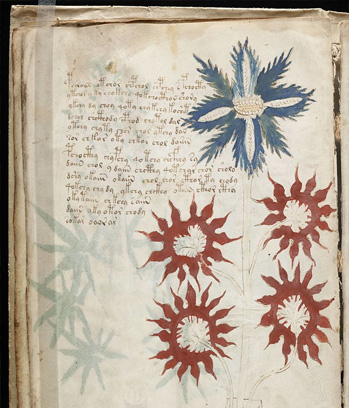
- Historical Background: This mysterious 15th-century manuscript contains an unknown script, bizarre illustrations of plants, astronomical diagrams, and naked women. The script has defied all attempts at decipherment, and the book’s meaning remains a complete enigma.
- Scientific Analysis: The Voynich Manuscript has undergone extensive scientific scrutiny. Carbon dating places its creation between 1404 and 1438, while analysis of the inks and paints confirms its medieval origin. Linguistic analysis reveals a structured script, but its patterns don’t resemble any known language. Statistical analysis suggests word patterns similar to natural languages.
- Current Theories: Theories about the Voynich Manuscript are wide-ranging. Some believe it’s a coded text in an unknown language, possibly a cipher. Others propose it’s a hoax or an elaborate glossary of herbal or alchemical knowledge. A recent theory suggests it may be a form of proto-Romance language.
- Open Questions and Research: Key questions include deciphering the script, identifying the language (if it exists), and understanding the purpose of the illustrations. Ongoing research employs advanced computer analysis, AI-assisted pattern recognition, and comparisons with other historical codes.
2. The Kryptos Sculpture
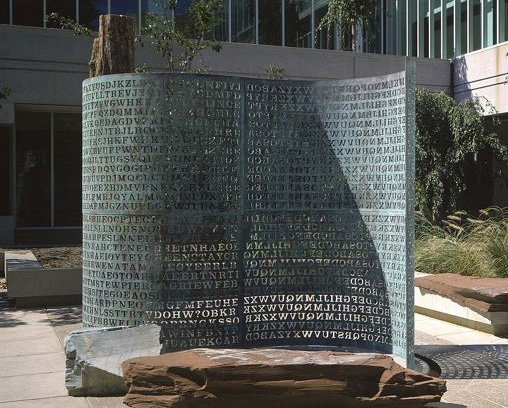
- Historical Background: Located outside the CIA headquarters in Langley, Virginia, Kryptos was created by artist Jim Sanborn in 1990. It features four encrypted sections, with three having been solved to date.
- Scientific Analysis: Cipher experts used various code-breaking techniques, including frequency analysis, transposition ciphers, and historical references, to decipher the first three sections. The fourth section still employs more complex encryption methods.
- Current Theories: The solved sections reveal poetic messages and clues. The final section is speculated to contain information about CIA operations, buried objects at the agency’s headquarters, or even a hidden message within the solved portions.
- Open Questions and Research: The primary mystery is decoding the fourth section of Kryptos. Researchers continue to apply advanced cryptographic techniques and search for potential clues from the artist himself.
3. The Phaistos Disc
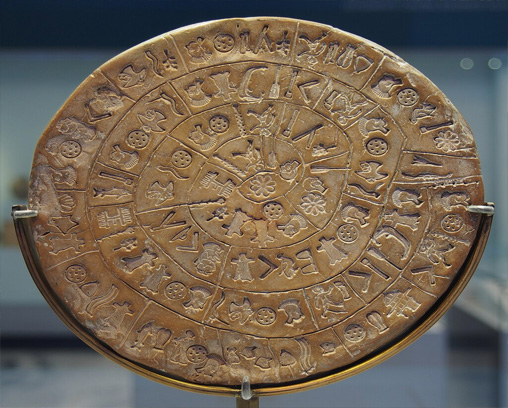
- Historical Background: Discovered in Crete in 1908, this clay disc from the Minoan civilization (around 1700 BC) has symbols stamped in a spiral pattern. Its purpose and meaning are unknown.
- Scientific Analysis: The Phaistos Disc’s unique symbol system has no parallels in other ancient scripts, making decipherment exceptionally difficult. Linguists have analyzed the symbol sequences and proposed various theories, including a religious text, an astronomical calendar, or a syllabic script.
- Current Theories: Several theories exist about the Phaistos Disc’s purpose and potential language origin. Some suggest links to Linear A (another undeciphered script), others to Egyptian hieroglyphs, or even an entirely unknown language.
- Open Questions and Research: The primary question is identifying the language family the symbols belong to. Researchers compare the symbols to other ancient scripts, analyze patterns, and use computational linguistics to search for potential linguistic roots.
Read More: 15 Unsolved Mysteries That Still Haunt Historians
4. The Shugborough Inscription
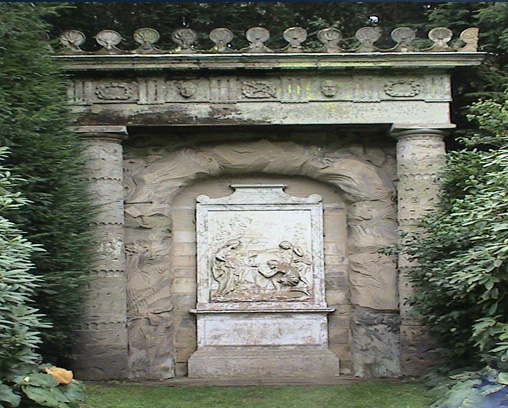
- Historical Background: This enigmatic inscription is carved into an 18th-century monument at Shugborough Hall in Staffordshire, England. The inscription reads “DOUOSVAVVM,” a seemingly random sequence of letters with a small shepherd’s cross below.
- Scientific Analysis: Many attempts have been made to decipher the Shugborough Inscription. Methods include anagramming, transposition ciphers, and applying code systems used during that era.

Image Source: wikipedia
- Current Theories: Theories range from the inscription being a coded message with hidden religious meaning to a personal love message. Some speculate links to secret societies like the Knights Templar or the Priory of Sion.
- Open Questions and Research: The inscription’s brevity makes it particularly challenging. Researchers continue to investigate potential historical ciphers, analyze the context of the monument, and search for any concealed clues or patterns within the letters themselves.
5. The Beale Ciphers
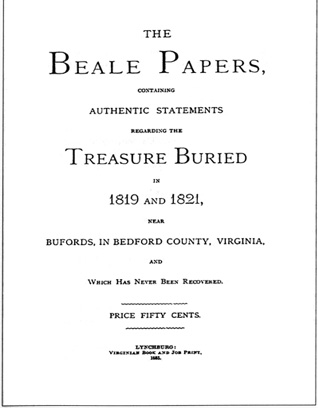
Image Source: wikipedia
- Historical Background: In 1885, a pamphlet titled “The Beale Papers” was published, allegedly containing three ciphers. If solved, they supposedly reveal the location of a vast buried treasure in Virginia. Only one cipher (the second) has been successfully decoded.
- Scientific Analysis: The second cipher was solved using a book cipher method, where the key was the US Declaration of Independence. Words in the cipher corresponded to their numerical position within the Declaration. Attempts to crack the remaining ciphers have involved complex statistical analysis and modern code-breaking techniques.
- Current Theories: Theories about uncracked ciphers range from them being fraudulent to containing directions to a different treasure location. Doubts exist about the story’s authenticity, as historical records connected to its narrative are scant.
- Open Questions and Research: The primary mystery is whether the remaining Beale Ciphers are genuine and if they indeed lead to treasure. Cryptographers continue to analyze them, while historians search for supporting evidence to validate the treasure legend.
6. Tamam Shud Case
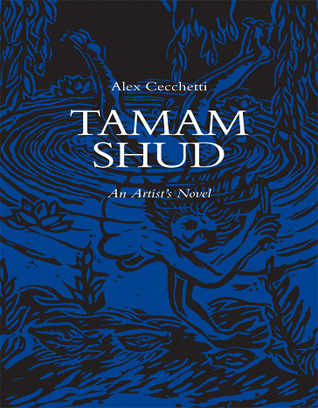
Image source: sternberg-press
- Historical Background: In 1948, an unidentified man was found dead on an Australian beach clutching a book titled “The Rubáiyát of Omar Khayyám.” The phrase “Tamam Shud” (Persian for “finished” or “ended”) was stamped on the book’s last page.
- Scientific Analysis: The book contained several additional markings and what appeared to be a coded message. Analysis revealed the coded message was most likely written in a European language. Attempts to decipher it using various linguistic techniques proved unsuccessful.
- Current Theories: Theories range from the man being a spy with a coded message to a suicide note written in a personal code. Some speculate a connection to a larger mystery or espionage ring.
- Open Questions and Research: The primary mystery remains the identity of the deceased and the meaning of the coded message. DNA analysis for potential identification is ongoing, while codebreakers continue to analyze the markings for potential language patterns or code systems.
Read More: 15 Legendary Lost Treasures: Fact, Fiction, and the Hunt Continues
7. Cicada 3301

- Historical Background: In 2001, an online puzzle appeared on the internet with the cryptic message “Cicada 3301.” It led to a series of increasingly complex puzzles requiring cryptography, steganography (hiding messages within images), and literary references.
- Scientific Analysis: The online puzzles employed various encryption techniques and drew on diverse knowledge areas, including mathematics, literature, and computer science. Solving them required a combination of code-breaking skills, lateral thinking, and internet research.
- Current Theories: The purpose of Cicada 3301 remains unclear. Theories suggest it was a recruitment test for an intelligence agency, a viral marketing campaign, or an elaborate online game. No definitive answer has emerged.
- Open Questions and Research: The identity of the creators and the true purpose of Cicada 3301 remain mysteries. Some speculate the puzzles may have reappeared online in different forms under new aliases, but this is unconfirmed.
8. The Zodiac Killer’s Ciphers
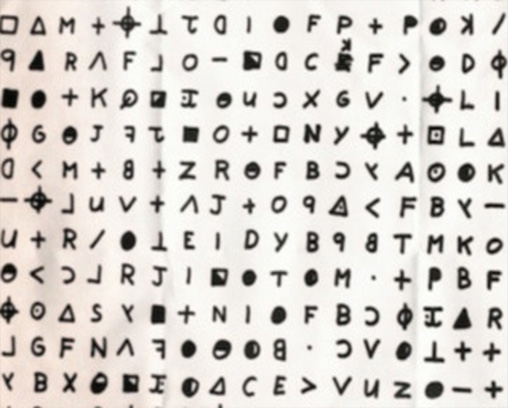
- Historical Background: Between 1960 and 1974, a serial killer in California known as the Zodiac Killer taunted police and media with letters containing ciphers. These ciphers were believed to contain details about the killer’s identity and crimes.
- Scientific Analysis: Cryptographers used various techniques, including frequency analysis and statistical methods, to attempt to decipher the ciphers. One cipher was solved by a high school student and another by a team of codebreakers decades later.
- Current Theories: Some believe the unsolved ciphers may contain the killer’s identity or the location of his victims’ remains. Others speculate they are meaningless or elaborate hoaxes.
- Open Questions and Research: Deciphering the remaining Zodiac ciphers remains a challenge. Researchers continue to apply advanced code-breaking techniques and search for potential clues within the ciphers themselves or the Zodiac’s letters.
9. Fenn’s Treasure

- Historical Background: In 1988, Forrest Fenn, an American author and art dealer, published his autobiography hinting at hiding a treasure chest filled with gold and artifacts somewhere in the Rocky Mountains. He provided clues in his book and subsequent releases.
- Scientific Analysis: The clues are a mix of cryptic poetry, historical references, and geographical descriptions. Treasure hunters have employed various methods like historical research, geospatial analysis, and physical searches to locate the chest.
- Current Theories: There’s debate about whether the treasure exists. Some believe it’s a marketing ploy, while others continue searching based on Fenn’s clues. His death in 2020 left the mystery unresolved.
- Open Questions: Did Fenn actually hide the treasure? If so, where is it located? Treasure hunters continue analyzing clues and searching potential locations based on their interpretations.
Read More: 15 Mind-Blowing Facts About Medieval Times That Will Transport You Back in History
10. The Rongorongo Script
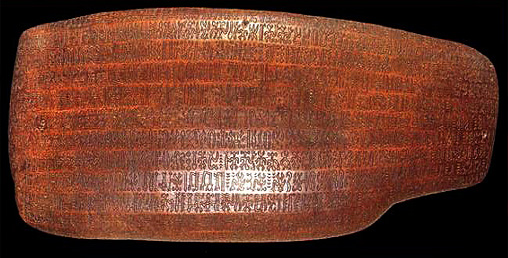
- Historical Background: Discovered on Easter Island, the Rongorongo script consists of carved glyphs on wooden tablets (called “kohau”). Its origin and creators remain unknown, as the Easter Island civilization had no known writing system.
- Scientific Analysis: Linguistic analysis suggests the script might be phonetic (representing sounds) or logographic (representing words or concepts). However, the lack of a Rosetta Stone (a key to decipher an unknown script) makes deciphering it highly challenging.
- Current Theories: Theories range from the script being a genuine writing system to a form of artistic expression or mnemonic device. Some connect it to potential contact with South American cultures who had writing systems.
- Open Questions: Was Rongorongo a true writing system? If so, what language did it represent? Further archaeological discoveries and advancements in deciphering ancient scripts may shed light on this mystery.
11. The Dorabella Cipher

- Historical Background: In 1789, an encrypted message titled “Dorabella” appeared in a German literary magazine. It has eluded decipherment for centuries. The message contains a mix of letters, numbers, and symbols.
- Scientific Analysis: Cryptographers have applied various techniques, including frequency analysis, substitution ciphers, and statistical methods, to crack the code. However, the lack of context or known language connection makes it exceptionally difficult.
- Current Theories: Theories suggest the Dorabella Cipher could be a musical code, a secret society communication, or even an elaborate hoax. Some believe it may be linked to Freemasonry due to potential symbolism within.
- Open Questions: The true nature and purpose of the Dorabella Cipher remain a mystery. Further research on potential historical context and a breakthrough in code-breaking techniques might be needed to solve it.
12. Linear A
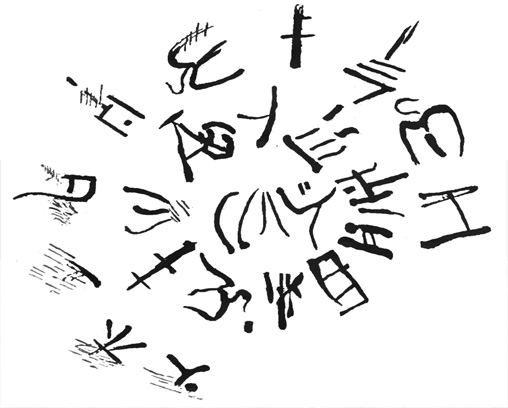
- Historical Background: Discovered in Crete in the early 20th century, Linear A is a writing system used by the Minoan civilization (around 2nd millennium BC). It predates the later Linear B script, which has been deciphered.
- Scientific Analysis: Linguistic analysis suggests Linear A might be related to an unknown Anatolian language or an early form of Greek. However, the lack of bilingual texts (containing the same message in both Linear A and a known language) hinders decipherment.
- Current Theories: Theories suggest Linear A could be a syllabic script (representing syllables) or a logo-syllabic script (combining word and syllable signs). Some believe it may be linked to the deciphered Linear B script, offering potential clues.
- Open Questions: What language does Linear A represent? Is it related to Linear B or an entirely independent system? Further archaeological discoveries and advancements in deciphering ancient writing systems might unlock this mystery.
13. Ricky McCormick’s Encrypted Notes
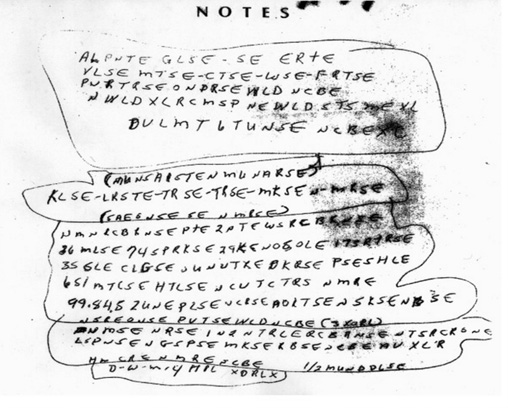
- Historical Background: In 1999, Ricky McCormick was found dead in Indiana with several encrypted notes near his body. The notes contained a mix of symbols, letters, and numbers, believed to be a code leading to hidden treasure.
- Scientific Analysis: Cryptographers and codebreakers have attempted to decipher the notes using various techniques, including frequency analysis, pattern recognition, and substitution ciphers. However, the lack of context and the seemingly random nature of the symbols make it highly challenging.
- Current Theories: Theories range from the notes being a personal code for financial records to a mental breakdown episode causing him to create a nonsensical code. Some speculate it might be a treasure map, but no concrete evidence supports this.
- Open Questions: Do the notes hold any meaning, or are they random scribblings? If they are a code, what does it reveal? Further investigation into McCormick’s life and analysis of potential code systems might provide answers.
Read More: History’s Biggest Turning Points: Myths, Facts, and Unexpected Impacts
14. The Somerton Man
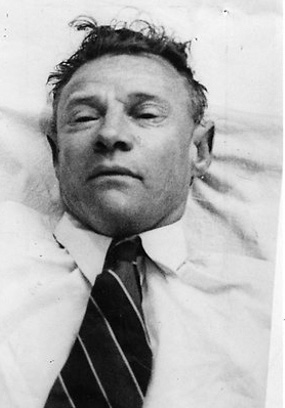
- Historical Background: In 1948, an unidentified man was found dead on an Australian beach. A coded message was found on a scrap of paper in his pocket, along with an unidentifiable phrase (“Tamam Shud”) sewn into his clothing (discussed earlier in explanation #6).
- Scientific Analysis: The coded message remains undeciphered despite attempts using various code-breaking techniques. DNA analysis has been unsuccessful in identifying the man, and no known connections have been established.
- Current Theories: Theories range from the man being a spy with a coded message to a suicide with a farewell note in an unknown language. Some speculate a connection to an international espionage ring.
- Open Questions: Who was the Somerton Man? What is the meaning of the coded message? Was there a connection to the Tamam Shud case or another unsolved mystery? New forensic techniques or historical discoveries might shed light on this enigma.
15. The Wow! Signal

- Historical Background: In 1977, astronomer Jerry Ehman detected a strong narrowband radio signal while using a telescope at Ohio State University. The signal had characteristics unlike any natural radio source previously observed.
- Scientific Analysis: Astronomers have attempted to pinpoint the source of the Wow! Signal using various radio telescopes, but no definitive source has been identified. Theories suggest it could be a powerful natural phenomenon or a signal from an extraterrestrial civilization.
- Current Theories: The nature of the Wow! Signal remains a mystery. Some believe it was a one-time event, while others speculate it could be a beacon from advanced extraterrestrial intelligence. Continued radio telescope observations and advancements in signal analysis might offer further insights.
Conclusion:
The allure of unsolved cryptic puzzles lies in their blend of intellectual challenge, historical enigma, and the tantalizing possibility that they hold long-hidden secrets. These puzzles remind us of the ingenuity and creativity of the human mind, and the enduring power of mystery to spark curiosity and fascination. Whether they contain buried treasure, secret messages, or simply the whims of an eccentric creator, these puzzles ignite our imaginations and drive us to seek answers. While many of these puzzles may never be fully solved, the pursuit of understanding is a captivating journey in itself.
15 Most Asked Questions (FAQs):
-
What’s the hardest unsolved puzzle in the world?
The Voynich Manuscript is widely considered the most difficult, due to its utterly unique script, bizarre illustrations, and resistance to all decipherment attempts.
-
What are some famous recently solved cryptic puzzles?
Portions of the Kryptos sculpture and the Zodiac Killer’s ciphers have been successfully cracked through the dedication of codebreakers.
-
Could any of these unsolved puzzles be hoaxes?
Yes! Some, like the Beale Ciphers or the Dorabella Cipher, could be elaborate deceptions rather than genuine codes with hidden meaning.
-
What are the best resources to learn more about unsolved puzzles?
Numerous websites and online communities delve into these mysteries. Here are a few to start with:
The Kryptos Group:
Cicada 3301 Wiki:
The Voynich Manuscript resources: https://www.voynich.nu/ -
Will the Voynich Manuscript EVER be deciphered?
There’s no way to know! Even if it’s a genuine language and not a hoax, centuries of separation from that language make it incredibly difficult to crack. However, advancements in AI and codebreaking could provide a breakthrough.
-
Do any of these puzzles ACTUALLY lead to hidden treasure?
Maybe! Some like Fenn’s Treasure were designed around this concept (and it turned out to be real). Others might be clever misdirections.
-
Are there undiscovered cryptic puzzles out there?
Almost certainly. History is filled with hidden messages and codes. Whether they’re grand enigmas or personal notes lost to time, more are likely waiting to be discovered.
-
Are there any common techniques used to solve cryptic puzzles?
Yes! Some standard techniques include:
Frequency analysis: Identifying the most frequent letters, symbols, or patterns as a starting point for code-breaking.
Linguistic analysis: Searching for patterns that might correspond to language structures or known word families.
Historical research: Digging into the historical context of the puzzle, which can provide clues about potential creators, motives, or relevant code systems. -
Could artificial intelligence (AI) help solve these cryptic puzzles?
Definitely! AI-powered pattern recognition, natural language processing, and machine learning algorithms are increasingly being applied to decipher ancient scripts and complex codes. AI can analyze massive data sets and identify potential relationships that would be difficult for humans alone.
-
Are there any lesser-known cryptic puzzles worth exploring?
Absolutely! Here are a few intriguing ones:
The Copiale Cipher: An 18th-century encrypted manuscript filled with symbols and Roman letters.
The Rohonc Codex: A mysterious illustrated book with an unknown script, possibly dating back to the 16th century.
The Ripley Scrolls: Alchemical scrolls created by 15th-century alchemist George Ripley, filled with symbolic imagery and cryptic text. -
Can I create my own cryptic puzzle?
Yes! Start with simple ciphers like substitution or transposition ciphers. Layer different techniques, incorporate visual clues, and provide subtle hints within the puzzle itself.
-
Where can I find communities of like-minded puzzle enthusiasts?
There are online forums, Reddit communities, and websites dedicated to the discussion and solving of cryptic puzzles. A few good starting points include:
r/codes subreddit:
Elonka Dunin’s Kryptos pages:
Nick Pelling’s Cipher Mysteries blog: -
What are the ethical considerations of solving cryptic puzzles that might contain personal or sensitive information?
It’s important to be mindful of potential privacy implications, especially with puzzles from a more recent origin. If a puzzle seems like it might reveal private information, it’s crucial to proceed with caution and respect the potential wishes of the original author.
-
What makes cryptic puzzles so addictive to some people?
Cryptic puzzles play on several psychological hooks:
Pattern Recognition: The human brain loves finding patterns, and cryptic puzzles often manipulate patterns in a way that tickles our curiosity.
The “Aha!” Moment: The thrill of suddenly cracking a code or discovering a hidden message is highly rewarding.
Community Connection: Collaborating with others in puzzle-solving creates a sense of shared purpose and camaraderie. -
Can solving cryptic puzzles have any cognitive benefits?
Yes! Engaging with cryptic puzzles can:
Strengthen problem-solving skills: They require thinking creatively and trying different approaches.
Improve attention to detail: Cryptic puzzles often necessitate spotting subtle clues and patterns.
Enhance historical and cultural knowledge: Many puzzles require researching historical contexts to find clues and references.




